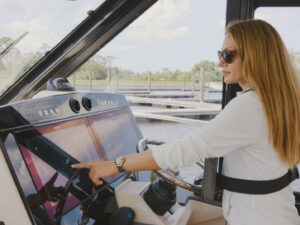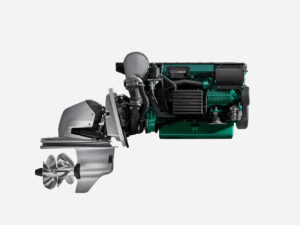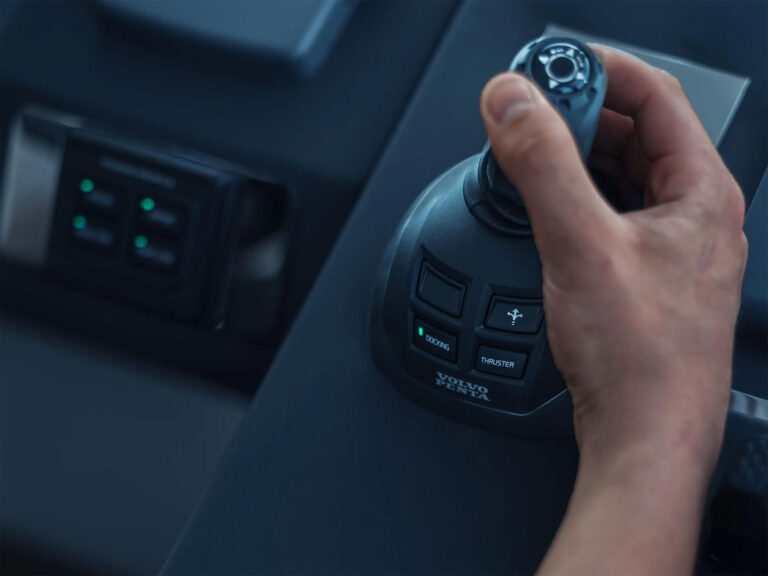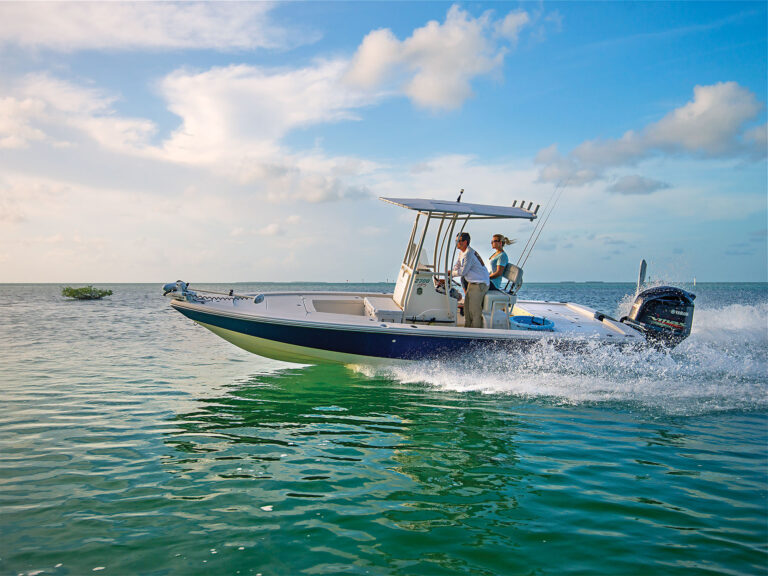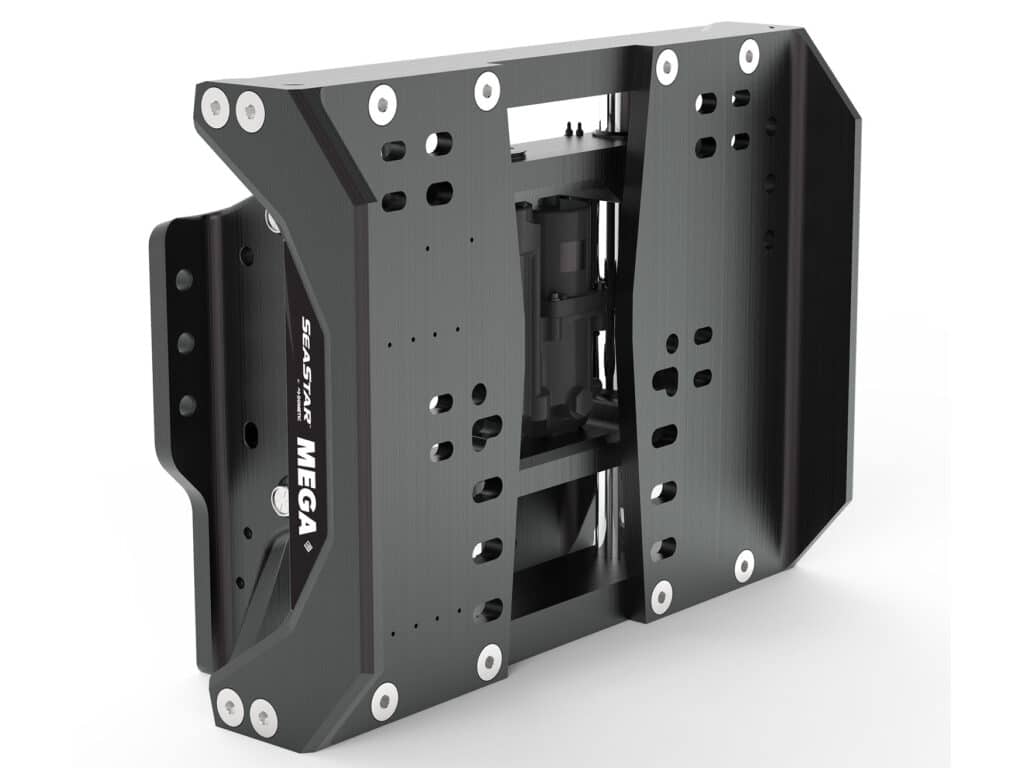
Jack plates are a common performance-enhancing accessory, typically found aboard high-performance boats, along with some bay boats and bass boats. Do jack plates make sense for boats when top speed is not the primary mission?
Yes, if my ride aboard a Coastal Craft 33 Expressfish (41 feet in length overall, 21,000 pounds of displacement) is an indication. The performance was notably improved on this cabin fishing boat powered by twin 350 hp Mercury Verado outboards and equipped with a pair of Dometic’s new Mega Jackplates.
Built of aluminum, the Coastal Craft hits 45 knots with the twin 350 Verados. While cruising, we noted a 100 rpm decrease in engine speed—without the loss of boatspeed—when raising the engines 3 inches using the Dometic Mega Jackplates. That will add up to real savings over the course of a season and the life of ownership.
Why not simply mount the engines higher to begin with? Mounting the engines higher will improve speed, but it will also hinder the ability to get on plane and hold plane at lower speeds. With jack plates, a boat owner can have their cake and eat it.
It’s intuitive, I think, that raising the engine height reduces drag because there is less gear case being pulled through the water. Setback takes more explaining.

Think of the water flowing along your boat’s bottom as an ideal stream for the propeller to work in. As this stream passes the transom, it rises at an angle. Setback allows the raised engine to remain in this clean stream, getting the most thrust with the least drag, and thus upping speed and efficiency.
The shallow-draft benefit delivered by jack plates is easier to explain than setback. Raising the engine vertically reduces draft without causing the boat to squat and without the reduced maneuverability that tilting up an engine can cause. According to Jeff Rhodes, owner of Coastal Craft, the many owners of his boats in the Bahamas value these attributes. I invite the reader to consider their own shallow-water scenarios, particularly areas with a lot of current.
Read Next: Installing an Outboard Motor Jack Plate on a Boat
Dometic Mega Jackplates are rated for up to 600 hp. They are available in 6-, 8- and 10-inch setbacks with both wide and standard mounts. In short, they can be fitted to most boats. They offer up to 6 inches of travel. Note that they are an addition to an already well-established line of jack plates from Dometic.
In operation aboard the Coastal Craft, Dometic’s Mega Jackplates operated simply and responsively. They are durably built of high-quality aluminum and stainless steel. Having toured Dometic’s manufacturing facility, I can assert that the Mega Jackplates are as rugged as they look.
The starting price at time of publication is $3,998, depending upon application.
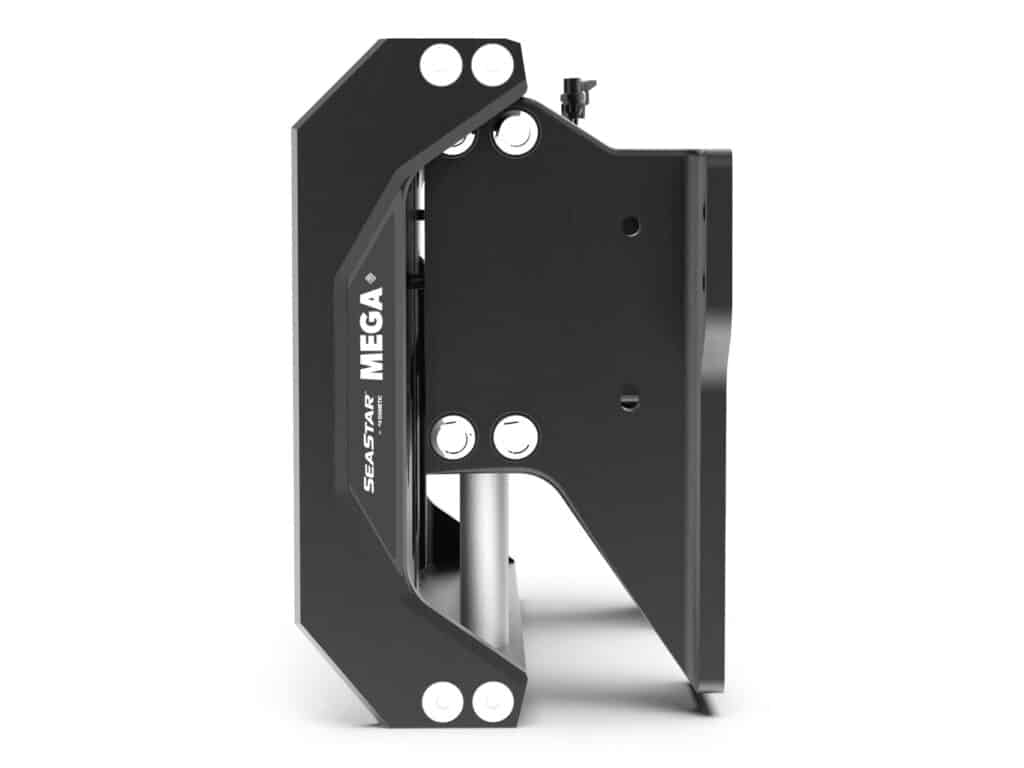
How Jack Plates Work
A jack plate raises the engine height, reducing drag and draft, and sets the engine back from the transom. Because the “clean” water flowing along a hull bottom rises at an angle as it leaves the transom, additional height—and additional setback—can keep the props turning in the best water.
Disclaimer: The subtleties of setback and engine height need to be discussed as specifics, including prop, boat, engine, rpm, gear ratio, speed and more. Seek the help of a knowledgeable dealer, engine-maker or boatbuilder, or go to Dometic directly by visiting dometic.com.

